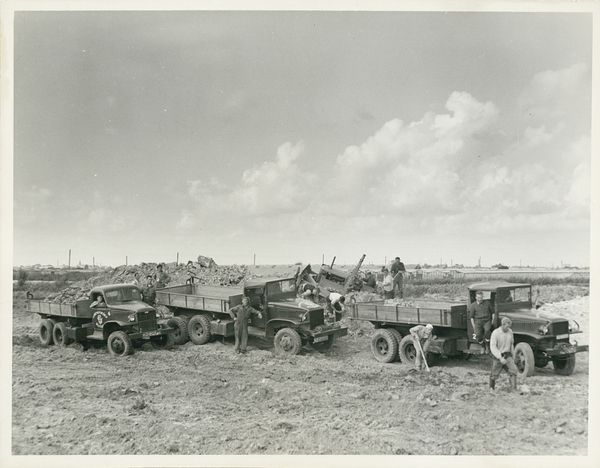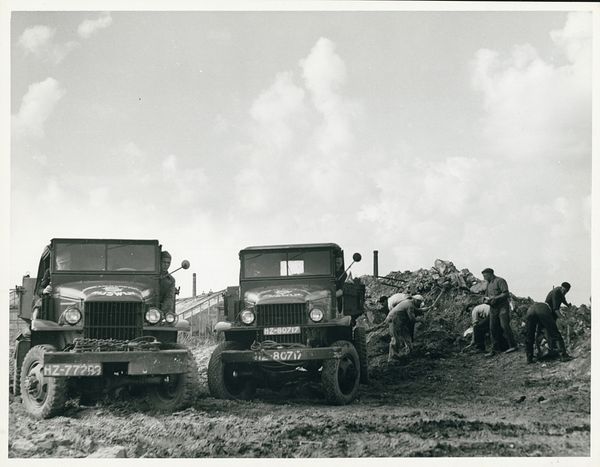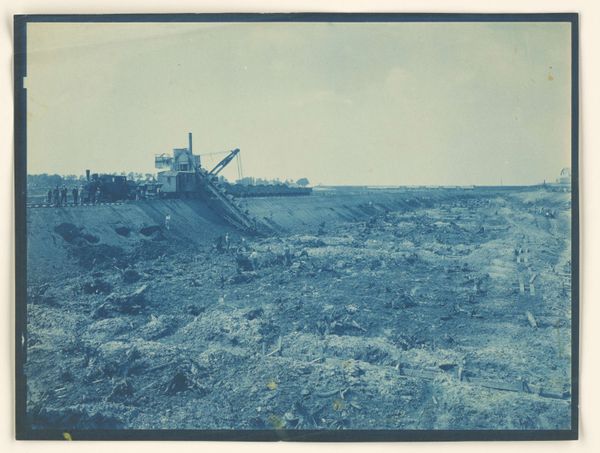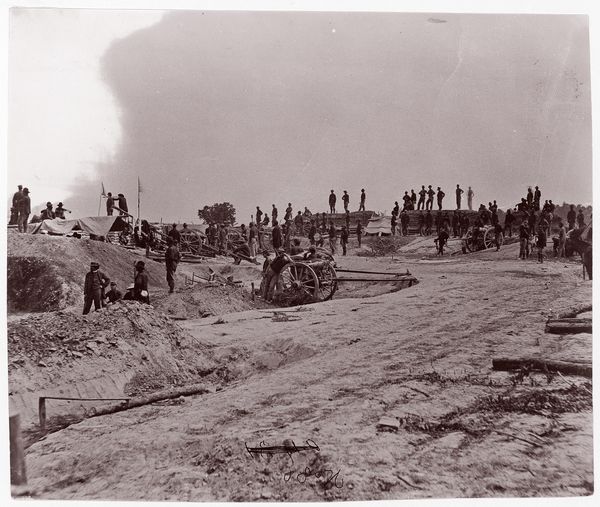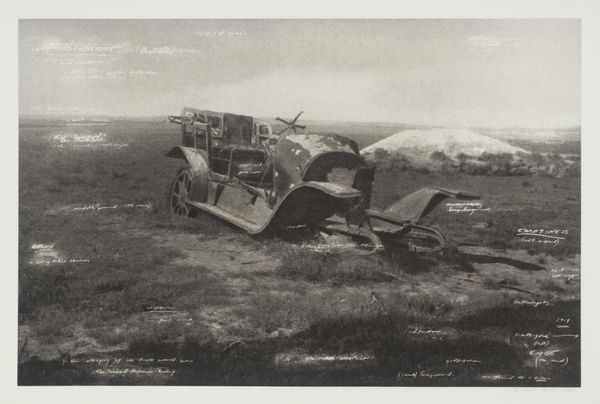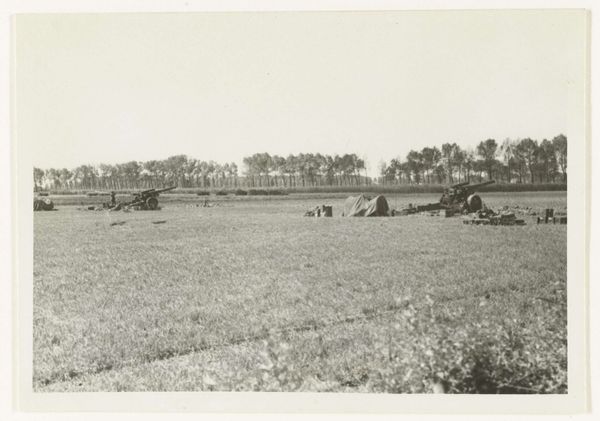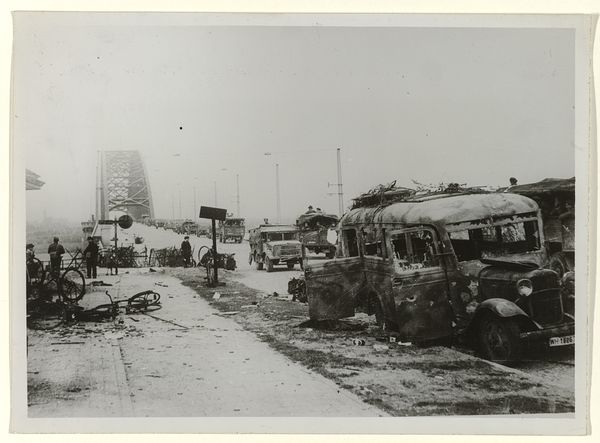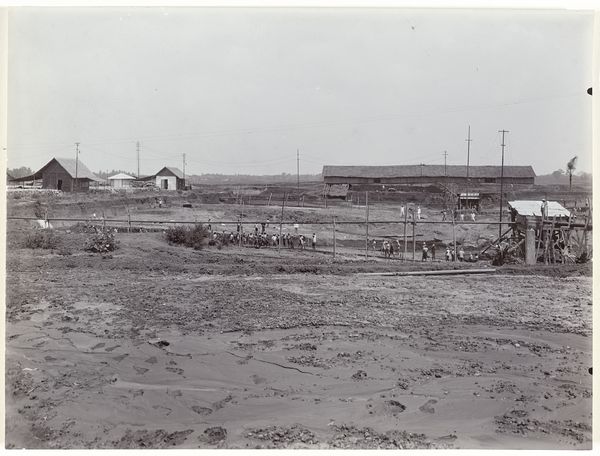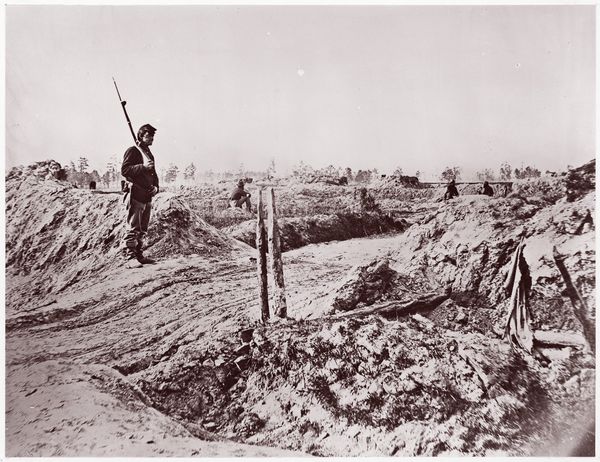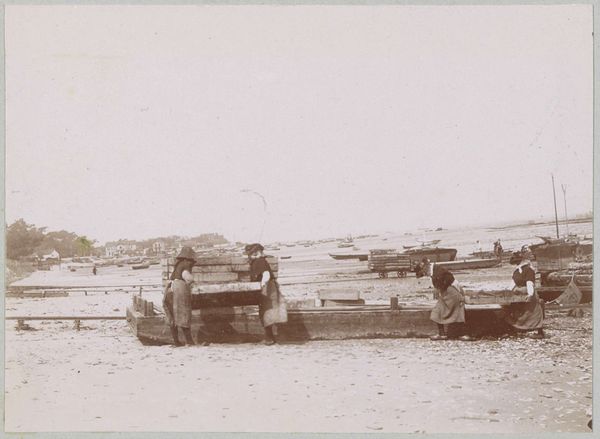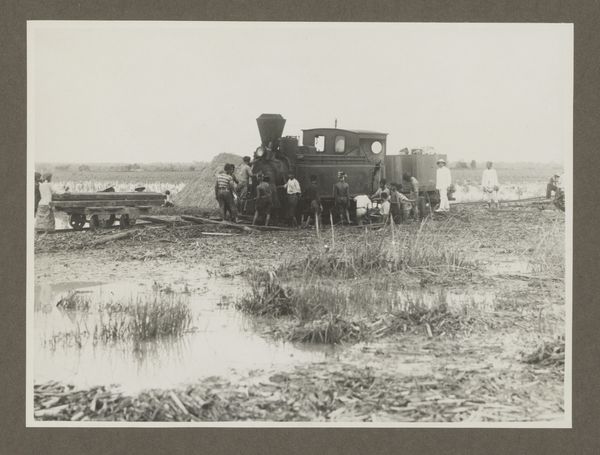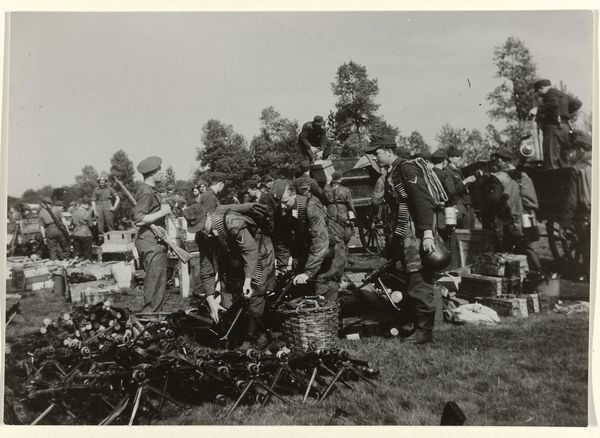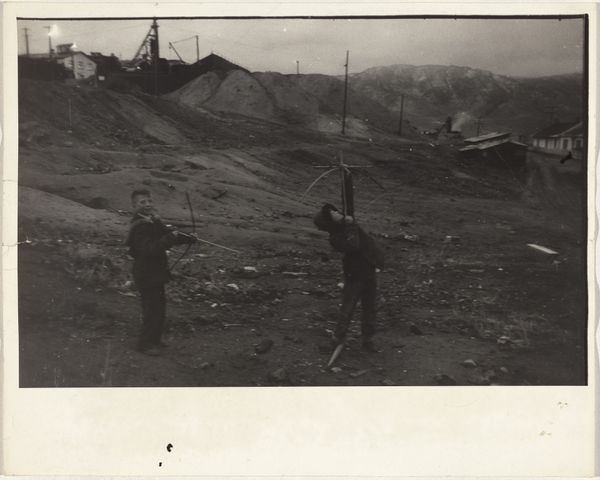
#
photo restoration
#
countryside
#
outdoor photograph
#
outdoor photo
#
outdoor loving
#
outdoor scenery
#
monochrome photography
#
nature environment
#
outdoor activity
#
shadow overcast
Dimensions: width 24 cm, height 19 cm
Copyright: Rijks Museum: Open Domain
Editor: Here we have "Opruimen Duitse fortificaties" or "Clearing German Fortifications," a photograph from between 1946 and 1947, attributed to the United States Information Service. The bleakness of the landscape, combined with the visible labor, strikes me as somber, like the end of something. How do you interpret this work? Curator: This photograph operates on many levels. At first glance, it’s a landscape depicting postwar recovery, right? But look closer. It's not just clearing rubble; it's about reshaping the narrative of a place, literally erasing traces of a specific history of oppression and violence. How does the presence of that singular figure operating the machinery affect your reading? Editor: It adds a sense of human agency, but also almost…loneliness. Like one person is tasked with dismantling this massive structure. Curator: Exactly. And think about whose labor is often missing from these grand narratives of rebuilding. Who operated the machines? Who planned these fortifications in the first place, and with what ideologies fueling their construction? This image can prompt us to consider the politics of erasure, asking who gets to write the next chapter. Do you notice any elements in the image that suggest resilience or resistance? Editor: The green shoots of grass emerging from the disturbed earth, maybe? Or that the bunker is only partly destroyed? Curator: Precisely. The image offers a subtle tension between obliteration and enduring presence. It forces us to ask crucial questions about power, memory, and who shapes the landscapes of our lives, physically and metaphorically. It's not just a photograph; it's an invitation to critical engagement with the past and present. Editor: I see the image so differently now! Thank you for expanding my perspective beyond the surface level of the scene. Curator: And thank you for your thoughtful reading! It reminds us that art is always a dialogue, not a monologue.
Comments
No comments
Be the first to comment and join the conversation on the ultimate creative platform.
